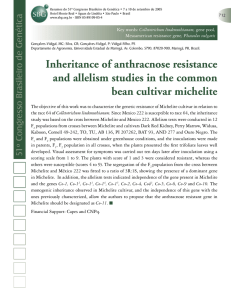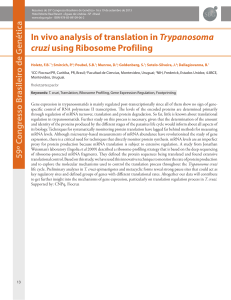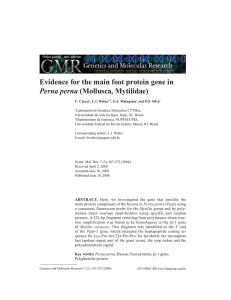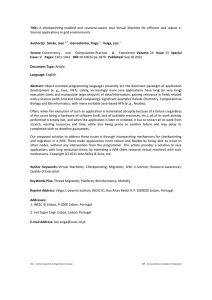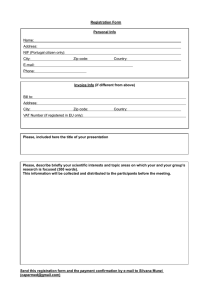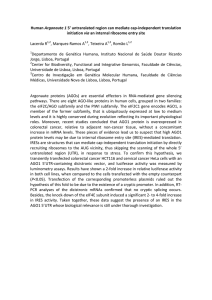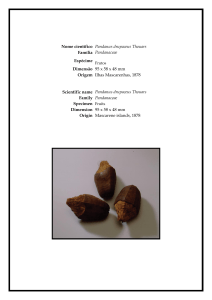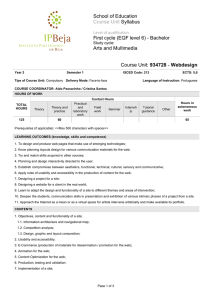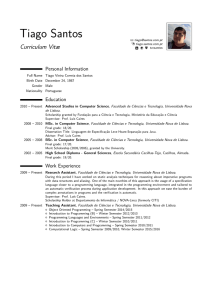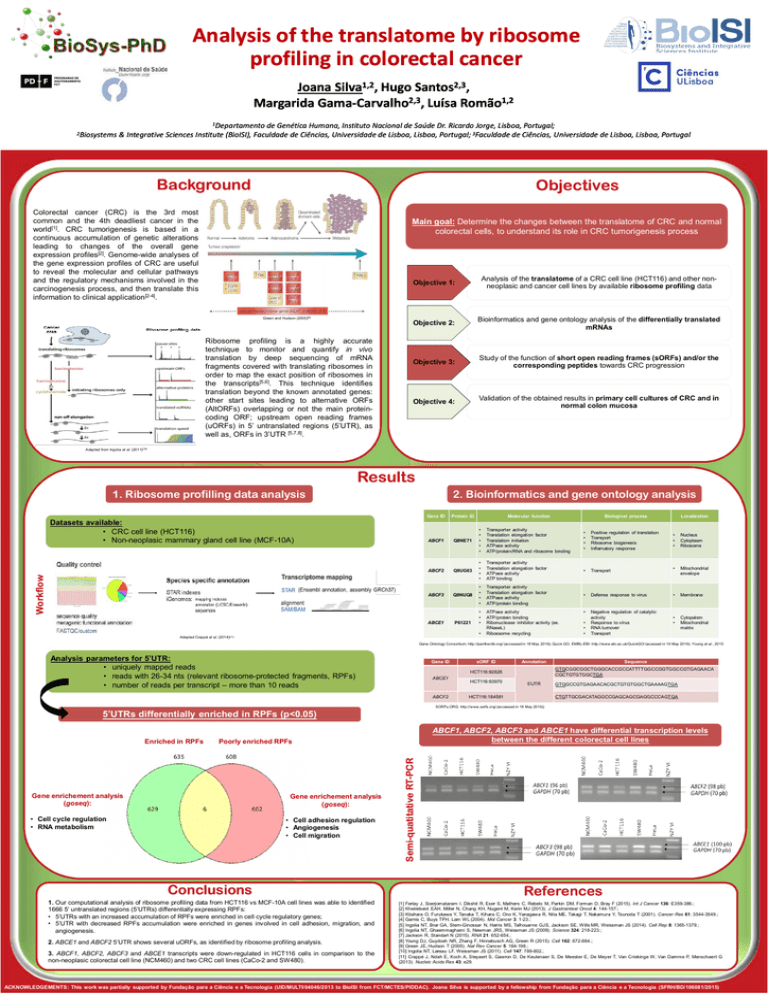
Analysis of the translatome by ribosome
profiling in colorectal cancer
Joana Silva1,2, Hugo Santos2,3,
Margarida Gama-Carvalho2,3, Luísa Romão1,2
2Biosystems
1Departamento de Genética Humana, Instituto Nacional de Saúde Dr. Ricardo Jorge, Lisboa, Portugal;
& Integrative Sciences Institute (BioISI), Faculdade de Ciências, Universidade de Lisboa, Lisboa, Portugal; 3Faculdade de Ciências, Universidade de Lisboa, Lisboa, Portugal
Background
Objectives
Colorectal cancer (CRC) is the 3rd most
common and the 4th deadliest cancer in the
world[1]. CRC tumorigenesis is based in a
continuous accumulation of genetic alterations
leading to changes of the overall gene
expression profiles[2]. Genome-wide analyses of
the gene expression profiles of CRC are useful
to reveal the molecular and cellular pathways
and the regulatory mechanisms involved in the
carcinogenesis process, and then translate this
information to clinical application[2-4].
Main goal: Determine the changes between the translatome of CRC and normal
colorectal cells, to understand its role in CRC tumorigenesis process
v
Green and Hudson (2005)[9]
Ribosome profiling is a highly accurate
technique to monitor and quantify in vivo
translation by deep sequencing of mRNA
fragments covered with translating ribosomes in
order to map the exact position of ribosomes in
the transcripts[5,6]. This technique identifies
translation beyond the known annotated genes:
other start sites leading to alternative ORFs
(AltORFs) overlapping or not the main proteincoding ORF; upstream open reading frames
(uORFs) in 5’ untranslated regions (5’UTR), as
well as, ORFs in 3’UTR [5,7,8].
Objective 1:
Analysis of the translatome of a CRC cell line (HCT116) and other nonneoplasic and cancer cell lines by available ribosome profiling data
Objective 2:
Bioinformatics and gene ontology analysis of the differentially translated
mRNAs
Objective 3:
Study of the function of short open reading frames (sORFs) and/or the
corresponding peptides towards CRC progression
Objective 4:
Validation of the obtained results in primary cell cultures of CRC and in
normal colon mucosa
Adapted from Ingolia et al. (2011)[10]
Results
1. Ribosome profilling data analysis
Gene ID
Workflow
Datasets available:
• CRC cell line (HCT116)
• Non-neoplasic
Objective
1 mammary gland cell line (MCF-10A)
Objective 2
Gene ID
Protein
ID
ABCF1
Q8NE71
ABCF2
Q9UG63
ABCF3
Q9NUQ8
Adapted Crappé et al. (2014)[11]
Analysis parameters for 5’UTR:
• uniquely mapped reads
• reads with 26-34 nts (relevant ribosome-protected fragments,
RPFs)
ABCE1
P61221
• number of reads per transcript – more than 10 reads
5’UTRs differentially enriched in RPFs (p<0.05)
•
•
•
•
•
•
•
•
•
•
•
•
•
•
•
•
•
ABCF2
Molecular function
• Cell adhesion regulation
• Angiogenesis
• Cell migration
Conclusions
1. Our computational analysis of ribosome profiling data from HCT116 vs MCF-10A cell lines was able to identified
1666 5’ untranslated regions (5’UTRs) differentially expressing RPFs:
• 5’UTRs with an increased accumulation of RPFs were enriched in cell cycle regulatory genes;
• 5’UTR with decreased RPFs accumulation were enriched in genes involved in cell adhesion, migration, and
angiogenesis.
2. ABCE1 and ABCF2 5’UTR shows several uORFs, as identified by ribosome profiling analysis.
Biological process
Q8NE71
Transporter activity
Translation elongation factor
Translation initiation
ATPase activity
ATP/protein/RNA and ribosome binding
Q9UG63
•
•
•
•
Transporter activity
Translation elongation factor
Biological
ATPase
activity process
ATP binding
Transporter activity
ABCE1
Translation elongation
factor P61221
ATPase activity
ATP binding
• • Positive
regulation
Transporter
activity of
• translation
Translation elongation factor
• • Transport
ATPase activity
• • Ribosome
biogenesis
ATP/protein
binding
• Inflamatory response
•
•
•
•
•
ATPase activity
ATP/protein binding
Ribonuclease inhibitor activity (ex.
Transport
RNaseL)
Ribossome recycling
•
•
•
•
Positive regulation of translation
Transport
Ribosome biogenesis
Inflamatory response
• Transport
Localization
•
•
•
Nucleus
• Defense response to virus
Cytoplasm
Ribosome
•
• Response to vírus
Mitochondrial
• RNA turnover
envelope
•
•
Negative regulation of catalytic
activity
Localization
•
•
•
Nucleus
Cytoplasm
Ribosome
•
Mitochondrial
envelope
•
Membrane
•
•
Cytopalsm
Mitochondrial
matrix
Transport
Gene Ontology Consortium: http://pantherdb.org/ (accessed in 18 May 2016); Quick GO, EMBL-EBI: http://www.ebi.ac.uk/QuickGO/ (acessed in 19 May 2016); Young et al., 2015
Transporter activity
Translation elongation factor
• Defense response to virus
• Membrane
ATPase activity
ATP/protein binding Gene ID
sORF ID
Annotation
Sequence
ATPase activity
ATP/protein binding
Ribonuclease inhibitorABCE1
activity (ex.
RNaseL)
Ribossome recycling
•
Negative regulation of catalytic GTGCGGCGGCTGGGCACCGCCATTTTGGCCGGTGGCCGTGAGAACA
activity
CGCTGTGTGGCTGA
• Cytopalsm
• Mitochondrial
GTGGCCGTGAGAACACGCTGTGTGGCTGAAAAGTGA
matrix
Transport
HCT116:92826
• Response to vírus
HCT116:93970
5’UTR
• RNA turnover
•
ABCF2
HCT116:184591
Gene Ontology Consortium: http://pantherdb.org/ (accessed in 18 May
2016); Quick GO, EMBL-EBI:
http://www.ebi.ac.uk/QuickGO/ (acessed in 19CTGTTGCGACATAGGCCGAGCAGCGAGGCCCAGTGA
May 2016); Young et al., 2015
Gene enrichement analysis
(goseq):
• Cell cycle regulation
• RNA metabolism
Molecular function
•
•
•
•
•
Transporter activity
Translation elongation factor
Translation initiation
ABCF3
Q9NUQ8
ATPase activity
ATP/protein/RNA and ribosome
binding
SORFs.ORG: http://www.sorfs.org/ (accessed in 18 May 2016))
ABCF1, ABCF2, ABCF3 and ABCE1 have differential transcription levels
between the different colorectal cell lines
Poorly enriched RPFs
Gene enrichement analysis
(goseq):
ABCF1
Protein ID
3. ABCF1, ABCF2, ABCF3 and ABCE1 transcripts were down-regulated in HCT116 cells in comparison to the
non-neoplasic colorectal cell line (NCM460) and two CRC cell lines (CaCo-2 and SW480).
Semi-quatitative RT-PCR
Enriched in RPFs
2. Bioinformatics and gene ontology analysis
References
[1] Ferlay J, Soerjomataram I, Dikshit R, Eser S, Mathers C, Rebelo M, Parkin DM, Forman D, Bray F (2015). Int J Cancer 136: E359-386.;
[2] Kheirelseid EAH, Miller N, Chang KH, Nugent M, Kerin MJ (2013). J Gastrointest Oncol 4: 144-157.;
[3] Kitahara O, Furukawa Y, Tanaka T, Kihara C, Ono K, Yanagawa R, Nita ME, Takagi T, Nakamura Y, Tsunoda T (2001). Cancer Res 61: 3544-3549.;
[4] Garnis C, Buys TPH, Lam WL (2004). Mol Cancer 3: 1-23.;
[5] Ingolia NT, Brar GA, Stern-Ginossar N, Harris MS, Talhouarne GJS, Jackson SE, Wills MR, Weissman JS (2014). Cell Rep 8: 1365-1379.;
[6] Ingolia NT, Ghaemmaghami S, Newman JRS, Weissman JS (2009). Science 324: 218-223.;
[7] Jackson R, Standart N (2015). RNA 21: 652-654.;
[8] Young DJ, Guydosh NR, Zhang F, Hinnebusch AG, Green R (2015). Cell 162: 872-884.;
[9] Green JE, Hudson T (2005). Nat Rev Cancer 5: 184-198.;
[10] Ingolia NT, Lareau LF, Weissman JS (2011). Cell 147: 789-802.;
[11] Crappé J, Ndah E, Koch A, Steyaert S, Gawron D, De Keulenaer S, De Meester E, De Meyer T, Van Criekinge W, Van Damme P, Menschaert G
(2013). Nucleic Acids Res 43: e29.
ACKNOWLEDGEMENTS: This work was partially supported by Fundação para a Ciência e a Tecnologia (UID/MULTI/04046/2013 to BioISI from FCT/MCTES/PIDDAC). Joana Silva is supported by a fellowship from Fundação para a Ciência e a Tecnologia (SFRH/BD/106081/2015)

